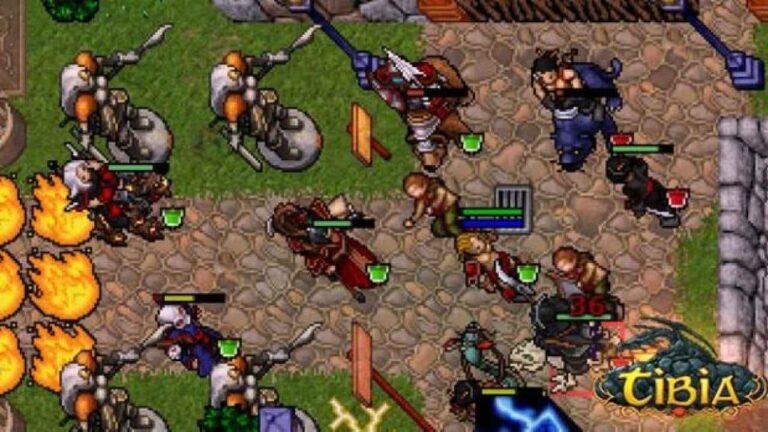Anúncios
Your gaming desk is the foundation of your entire setup — a central piece that determines not only how comfortable you feel but also how efficiently you play. A well-chosen desk supports your gear, keeps your space organized, and enhances the visual appeal of your gaming room.
In the U.S., gamers have countless options, from budget-friendly compact desks to high-end command centers with integrated lighting and ergonomic features. With so many choices, it’s easy to get lost without a clear plan.
Anúncios
This guide will walk you through 10 essential steps to choosing the right gaming computer desk for your space, style, and needs. Whether you’re a casual gamer, a competitive player, a streamer, or a parent setting up a gaming station for your child, these tips will help you make a smart, informed decision.
Step 1: Measure Your Gaming Space
Before falling in love with a desk design online, you need to know exactly how much space you have.
Anúncios
- Use a tape measure to check width, depth, and height availability.
- Consider walking space, door clearance, and room for your chair to move.
- Think about natural light sources — placing your desk near a window can help, but avoid direct sunlight on your monitor.
📌 Pro Tip: If you plan to add extra gear later (second monitor, bigger PC case), measure with future upgrades in mind.
Step 2: Choose the Right Desk Size
Size is one of the biggest factors in comfort and efficiency.
- Small desks (40–47 inches wide) – Ideal for single-monitor setups or small bedrooms/dorms.
- Medium desks (48–59 inches) – Good for dual monitors and extra peripherals.
- Large desks (60+ inches) – Perfect for multi-monitor setups, streamers, and those who want plenty of space for accessories.
📌 Popular Picks in the U.S.:
- Atlantic Gaming Desk – Compact and functional with built-in storage.
- Arozzi Arena Gaming Desk – Large, spacious, and with a mousepad surface.
- IKEA Bekant – Affordable and available in multiple sizes.
Step 3: Consider Material and Build Quality
Your desk must be sturdy enough to hold your entire setup and resist wear over time.
Common Materials:
- Wood (MDF or solid wood) – Durable, warm look, and stable.
- Metal frames with MDF tops – Strong and modern.
- Tempered glass – Stylish, but heavier and requires frequent cleaning.
Check weight capacity — most good gaming desks support 100–150 lbs easily.
Step 4: Look for Ergonomic Design
Gaming sessions can last hours, so ergonomics matter.
- Height – Standard desks are 28–30 inches tall; adjustable desks are better for comfort.
- Shape – L-shaped desks maximize space and make multitasking easier.
- Curved edges – Reduce wrist pressure and improve comfort.
📌 Top Ergonomic Models:
- Secretlab Magnus Pro – Motorized height adjustment and built-in cable management.
- FlexiSpot E7 Standing Desk – Perfect for alternating between sitting and standing.
Step 5: Check Cable Management Options
Messy cables kill the look of a setup. Look for:
- Cable grommets – Holes to route cables through the desktop.
- Under-desk trays – Hide power strips and cords.
- Built-in channels – Keep everything neatly tucked away.
Some desks like the Eureka Ergonomic Z1-S even come with RGB lighting and cable storage combined.
Step 6: Prioritize Surface Space
Your desk should hold everything you need within reach:
- Monitors
- Keyboard and mouse
- Speakers or headset stand
- Microphone and webcam (if streaming)
- Decorative items like LED panels or action figures
📌 Pro Tip: Always leave at least 20% free surface space so you can move your mouse freely and avoid clutter.
Step 7: Consider Storage Features
Integrated storage keeps your setup tidy. Options include:
- Side drawers for controllers, cables, and manuals.
- Shelves for consoles and collectibles.
- Hooks for headsets or bags.
The Mr IRONSTONE L-Shaped Desk is a budget-friendly option with shelves and hooks included.
Step 8: Choose a Style That Matches Your Setup
A desk isn’t just functional — it’s part of your gaming room’s aesthetic.
- Minimalist – Clean lines, neutral colors.
- RGB-lit – Built-in LED strips for immersive lighting.
- Industrial – Metal and wood mix for a rugged feel.
If your room already has a theme (cyberpunk, retro, modern), match your desk to it for a cohesive look.
Step 9: Evaluate Portability and Assembly
If you move often or like to rearrange your room:
- Choose lightweight but sturdy models.
- Look for desks that come with clear assembly instructions.
- Avoid overly complex designs unless you plan to keep them in place long-term.
📌 Pro Tip: Many Amazon reviewers mention that L-shaped desks take longer to assemble but offer better space efficiency.
Step 10: Set a Budget and Compare Options
Gaming desks can range from $100 to $1,000+ depending on size, material, and features.
- Under $200 – Basic but functional models like the CubiCubi Computer Desk.
- $200–$500 – High-quality gaming desks with cable management and durable build.
- $500+ – Premium, ergonomic, and fully customizable desks.
📌 Don’t just buy the first one you see — compare reviews, brand reputation, and warranty policies.
Conclusion
Choosing a gaming computer desk isn’t just about looks — it’s about finding the perfect balance between comfort, durability, and style. By measuring your space, understanding your needs, and exploring different designs, you can create a gaming setup that keeps you comfortable, organized, and inspired.
Invest wisely, and your desk will not only support your gaming gear but also help you level up your experience.
FAQs
1. What’s the best desk for small gaming setups?
Compact desks like the Atlantic Gaming Desk work great for limited spaces.
2. Can I use a regular office desk for gaming?
Yes, but gaming desks often have better ergonomics and cable management.
3. Should I get an adjustable desk for gaming?
If you value posture and health, adjustable desks are a great investment.
4. Is glass a good material for gaming desks?
It looks sleek but requires more cleaning and can be heavier to move.
5. How long should a good gaming desk last?
With proper care, a quality desk can last 5–10 years or more.



